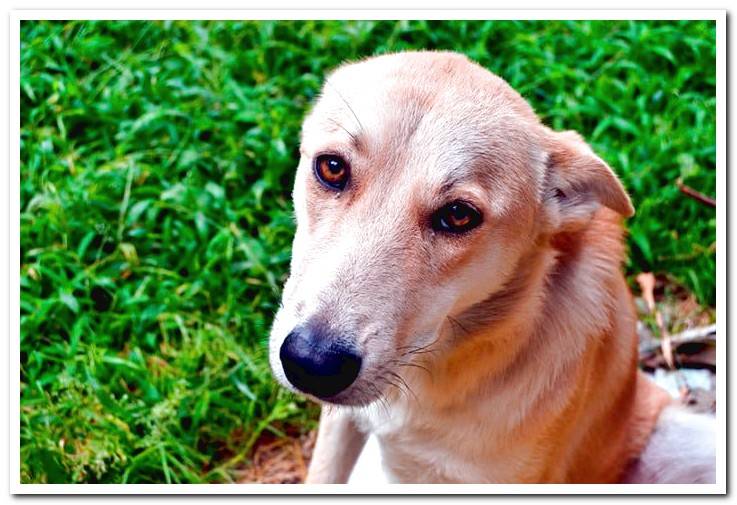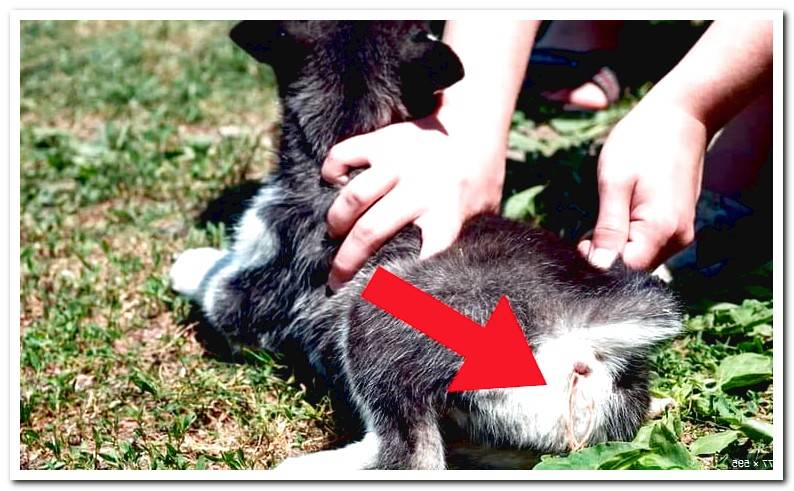
The most frequent internal parasites in dogs are those that are commonly known as worms or earthworms. They can be round worms “nematodes” or flat “cestodes or tapeworms”.
These parasites frequently lodge in the dog’s intestine, but can also affect the heart and lungs. Let’s see what internal worms can infect our dog and how to prevent them, to keep them healthy and prevented.
Index of contents
- 1 What are internal worms or endoparasites?
- 2 What are the main worms that can parasitize the dog?
- 3 Characteristics of Toxocara canis
- 4 Characteristics of Dirofilaria immitis
- 5 Characteristics of Echinococcus spp.
- 6 Characteristics of Dipylidium caninum
- 7 How can we know if our dog is parasitized by worms?
- 8 How can we prevent our dog from having internal worms?
- 9 What is the best internal deworming protocol for dogs?
- 10 What internal dewormer should I give my dog?
What are internal worms or endoparasites?
A parasite is a living being that lodges and feeds at the expense of another living being, generally of a different species and larger, called a host. Internal parasites or endoparasites they are those that live inside the animal and the most frequent are those that we commonly call worms.
The worms that parasitize dogs can be round (nematodes) or flat (cestodes or tapeworms) and these parasites frequently lodge in the intestine, but can affect other organs such as the heart or lungs.
What are the main worms that can parasitize the dog?
There are a significant number of internal parasites that can parasitize dogs, and some are more important than others due to their higher prevalence, their pathogenicity for the host or because they can be transmitted to people (zoonotic potential).
We can classify the main worms into two groups according to their location in the host:
- Intestinal worms: Toxocara canis, Echinococcus granulosus, Dipylidium caninum, Taenia spp.
- Non-intestinal worms: Dirofilaria immitis o heart worm
Most of these parasites are transmitted in the form of eggs or larvae through the faeces, however, Dirofilaria immitis spreads through mosquito bites.
Characteristics of Toxocara canis
Toxocara canis is a roundworm that usually lodges in the dog’s intestine and with the feces its eggs are expelled into the environment.
In adult dogs this parasite does not usually produce symptoms, but in puppies it migrates from the intestine to the lungs and causes respiratory signs (cough and nasal discharge). If the infection is massive, worms in the stomach and intestine cause vomiting, diarrhea, and the abdomen is distended.
If a pregnant female is parasitized by Toxocara canis, her cubs can become infected before birth (intrauterine route) or through milk during lactation, therefore, the newborns should be internally dewormed (with specific dewormers for puppies such as Mebendazole or Febendazole) at two weeks of age and repeat the deworming treatment every 15 days up to two weeks after weaning. From that moment, it is recommended to internally deworp the puppies monthly until six months of age.

Characteristics of Dirofilaria immitis
Heartworm disease or heartworm disease is a parasitic infection caused by heartworm immitis. Adult worms live in the heart and / or lungs of the infected dog, and cause a slowly progressive disease that will give symptoms at 5-7 months post infection: weight loss, respiratory distress, persistent cough, exercise intolerance.
This parasite is transmitted by mosquito bites, making coastal and humid areas (rivers, lakes), risk areas, especially in the months with milder temperatures (April-October).
Treating dogs that have already developed symptoms can be complicated, so prevention of this disease is essential. If the dog lives in a risk zone, we must deworm it monthly with antiparasitics that prevent infection by eliminating the immature phases of this parasite before they reach the heart (milbemicin oxina).
If the dog travels promptly to a risk area, he should be dewormed monthly while in this area and the last deworming should be given 30 after returning from an endemic area.
Characteristics of Echinococcus spp.
The importance of the parasite Echinococcus spp. lies in that can be transmitted to man through dog feces, causing a disease with cyst formation, especially in the liver, which can be fatal (Hydatidosis).
The dog becomes infected by eating small rodents, guts or carcasses of infected animals (sheep, pigs, goats, horses) and this parasitosis does not usually cause symptoms in dogs.
Characteristics of Dipylidium caninum
Dipylidium caninum or tapeworm is a common parasite in the dog that lives in the intestine and each worm can measure up to 60 cm in length. It consists of segments the size of a grain of rice that are detached to be expelled abroad with the faeces. These segments have their own mobility and cause itching in the perianal area and the dog drags the anus across the floor.
This parasite is transmitted through infected fleas when the dog, by biting to scratch, ingests these insects.
How can we know if our dog is parasitized by worms?
Intestinal worms do not usually give symptoms in the adult animal and the heartworm does not produce clinical signs until several months after infection, so it is difficult to know if our dog is infected if there is no stool or blood test.
The parasitic infection of all worms can be identified by stool tests, except Dirofilaria immitis, which requires a blood test for diagnosis.
How can we prevent our dog from having internal worms?
Preventing our dog from having internal parasites is relatively easy if we follow a series of general measures and an adequate internal deworming protocol.
- We must avoid that our dog has access to rodents, slugs, snails, snakes, that it can hunt, animal carcasses or raw meat and fish, since their ingestion c
an be a source of parasites. - Dog feces should be collected when defecating on the street, since the infective forms of worms are generally excreted in the faeces and can remain in the environment for a month to several years, infecting other dogs.
- Although our dogs are properly dewormed and collect their feces, the problem is in the difficulty of controlling feces of stray cats, which can be a source of parasites for the dog. That is why it should regularly deworming dogs and, whenever necessary, perform routine stool tests to confirm the efficacy of antiparasitic treatment.
What is the best internal deworming protocol for dogs?
There are two options in preventing intestinal worms in the adult dog:
- Carry out periodic stool tests (monthly or quarterly), and only give antiparasitic treatment in the event that stool tests show the presence of any parasite.
- Administer antiparasitic treatment on a regular basis, that is, internally deworming our dog every three months. In risk environments (dogs that live with young children, hunting dogs, dogs that live in endemic areas of Dirofilaria, etc.), it is recommended that internal deworming be monthly.
What internal dewormer should I give my dog?
The ideal is to internally deworm our dog with broad-spectrum dewormers capable of eliminating both round and flat worms. A good treatment would be one that is effective both against intestinal worms and against Dirofilaria immitis (milbemicin oxina and praziquantel).
IMPORTANT!, before administering any antiparasitic treatment, we must consult with the veterinaryn, since there are certain products that cannot be supplied to puppies, pregnant females or animals with specific pathologies.
